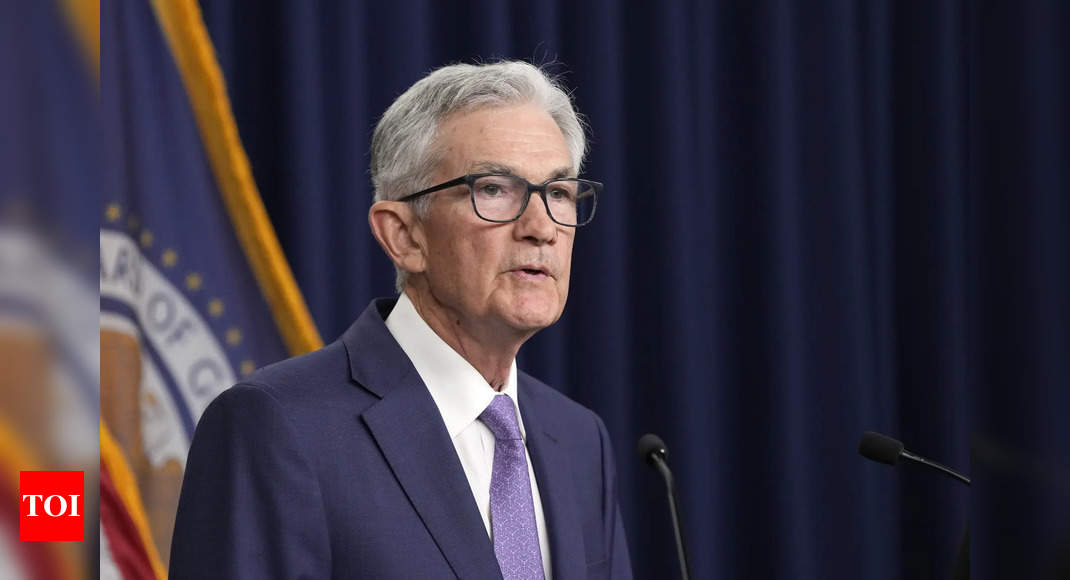
On Wednesday, the S&P 500 and Nasdaq experienced their most significant daily percentage gains since February 22nd, while the Dow also rose. This rally was driven by a surge in chip stocks and the Federal Reserve‘s decision to maintain US interest rates unchanged, while indicating a possible easing in September if inflation cools down.
Technology and consumer discretionary stocks led the advance, with seven out of the eleven S&P 500 sectors posting gains.The weakest sectors were healthcare, real estate, and consumer staples. The Fed’s decision to keep the benchmark overnight interest rate in the 5.25%-5.50% range was widely anticipated, but the central bank’s openness to easing in September, just seven weeks before the November US elections, was noteworthy. The benchmark U.S. 10-year note yield dropped 9.8 basis points to 4.043%.
During his press conference, Fed Chair Jerome Powell mentioned that policymakers discussed the possibility of cutting rates, but a “strong majority” agreed that now was not the appropriate time. Analysts interpreted this as a clear indication that the Fed is prepared for a rate cut in September, with some suggesting that this may already be priced into stocks.
Data released earlier on Wednesday showed that July US private payrolls increased far less than expected, signaling an easing in persistent labor market tightness. For the month, the S&P 500 climbed 1.1%, the Dow jumped 4.4%, while the Nasdaq lost 0.8%.
Nvidia’s stock surged nearly 13%, boosted by a positive 2024 sales forecast for artificial intelligence chips by its peer Advanced Micro Devices, whose shares also gained 4.3%. The Philadelphia SE Semiconductor index finished up nearly 7%. The U.S. administration plans to introduce a new rule next month that will expand US powers to stop exports of semiconductor manufacturing equipment from some foreign countries to Chinese chipmakers.
Microsoft dipped 1% after reporting substantial AI-related expenses. Meta jumped 5% after the bell as its earnings exceeded market expectations. Apple and Amazon.com, which will report earnings on Thursday, closed up 1.5% and 2.9%, respectively.
Advancing issues outnumbered decliners by a 2.23-to-1 ratio on the NYSE and by 1.58-to-1 on the Nasdaq. The S&P 500 posted 68 new 52-week highs and one new low, while the Nasdaq Composite recorded 168 new highs and 104 new lows. Total volume on US exchanges was 13.3 billion, compared with the 20-day moving average of 13.27 billion.
(With inputs from agencies)
Technology and consumer discretionary stocks led the advance, with seven out of the eleven S&P 500 sectors posting gains.The weakest sectors were healthcare, real estate, and consumer staples. The Fed’s decision to keep the benchmark overnight interest rate in the 5.25%-5.50% range was widely anticipated, but the central bank’s openness to easing in September, just seven weeks before the November US elections, was noteworthy. The benchmark U.S. 10-year note yield dropped 9.8 basis points to 4.043%.
During his press conference, Fed Chair Jerome Powell mentioned that policymakers discussed the possibility of cutting rates, but a “strong majority” agreed that now was not the appropriate time. Analysts interpreted this as a clear indication that the Fed is prepared for a rate cut in September, with some suggesting that this may already be priced into stocks.
Data released earlier on Wednesday showed that July US private payrolls increased far less than expected, signaling an easing in persistent labor market tightness. For the month, the S&P 500 climbed 1.1%, the Dow jumped 4.4%, while the Nasdaq lost 0.8%.
Nvidia’s stock surged nearly 13%, boosted by a positive 2024 sales forecast for artificial intelligence chips by its peer Advanced Micro Devices, whose shares also gained 4.3%. The Philadelphia SE Semiconductor index finished up nearly 7%. The U.S. administration plans to introduce a new rule next month that will expand US powers to stop exports of semiconductor manufacturing equipment from some foreign countries to Chinese chipmakers.
Microsoft dipped 1% after reporting substantial AI-related expenses. Meta jumped 5% after the bell as its earnings exceeded market expectations. Apple and Amazon.com, which will report earnings on Thursday, closed up 1.5% and 2.9%, respectively.
Advancing issues outnumbered decliners by a 2.23-to-1 ratio on the NYSE and by 1.58-to-1 on the Nasdaq. The S&P 500 posted 68 new 52-week highs and one new low, while the Nasdaq Composite recorded 168 new highs and 104 new lows. Total volume on US exchanges was 13.3 billion, compared with the 20-day moving average of 13.27 billion.
(With inputs from agencies)







